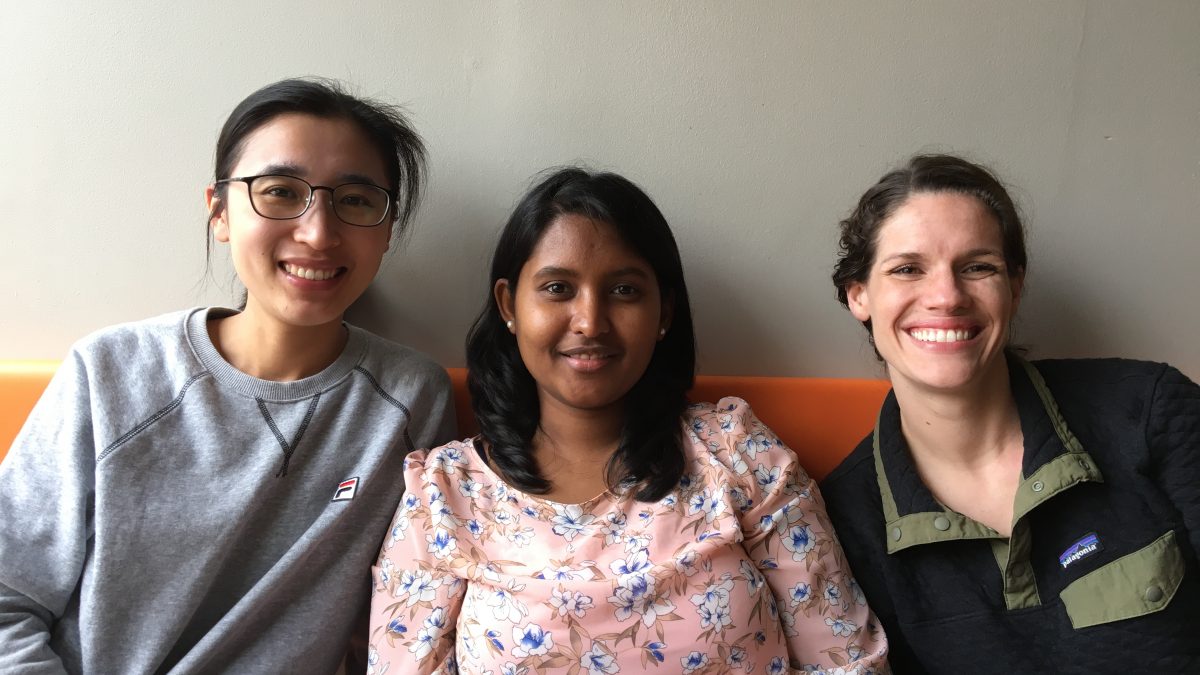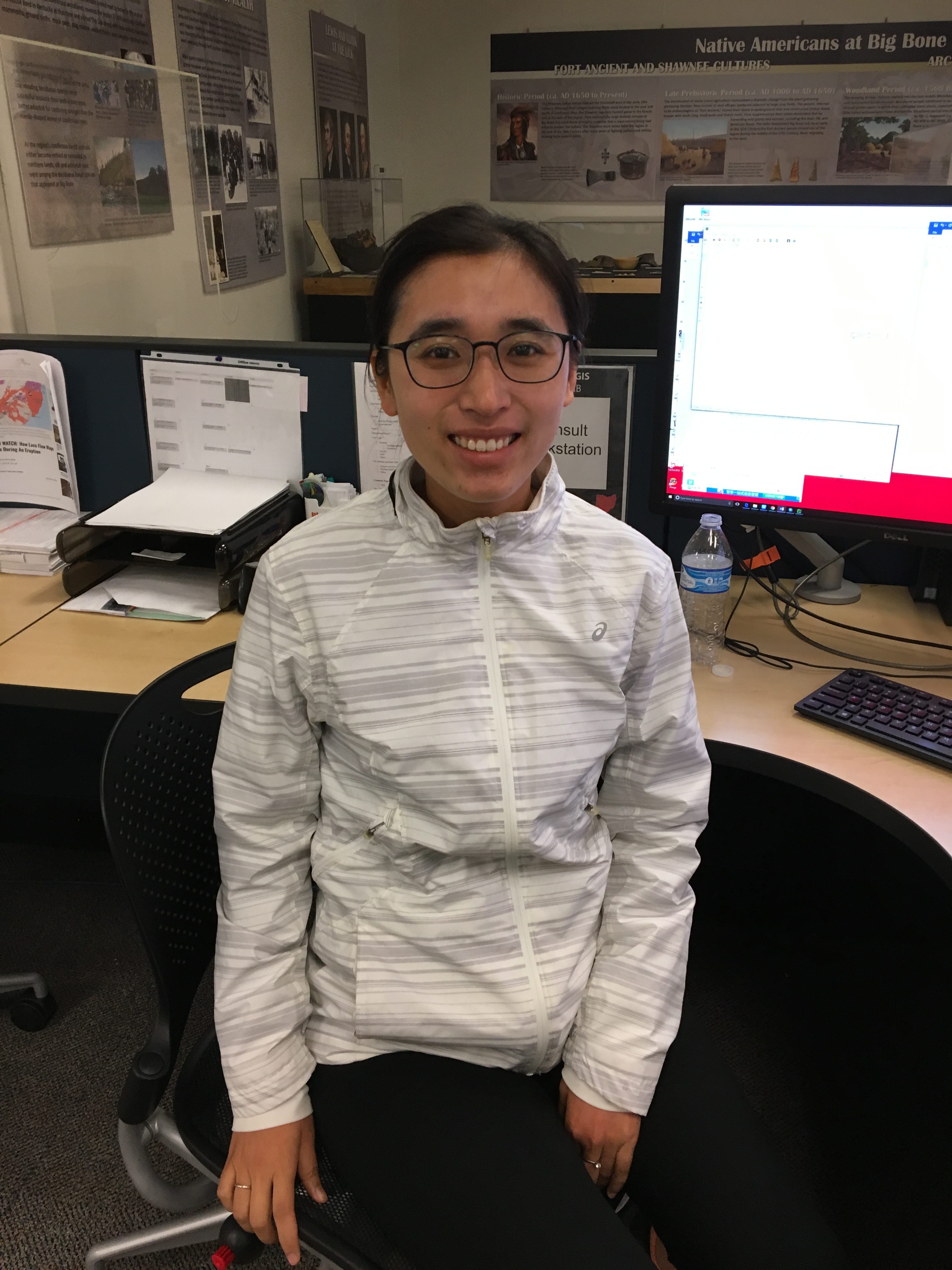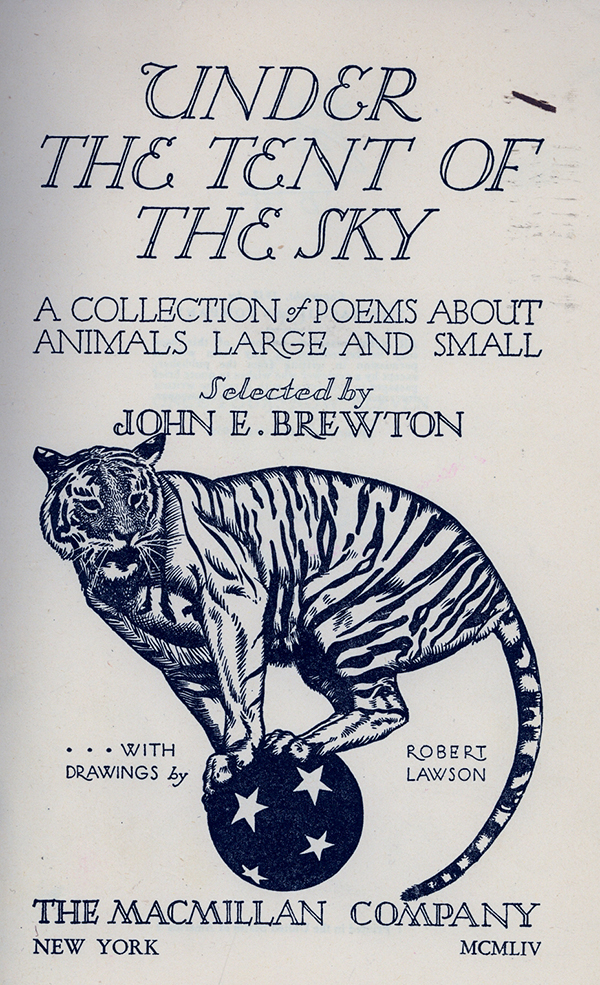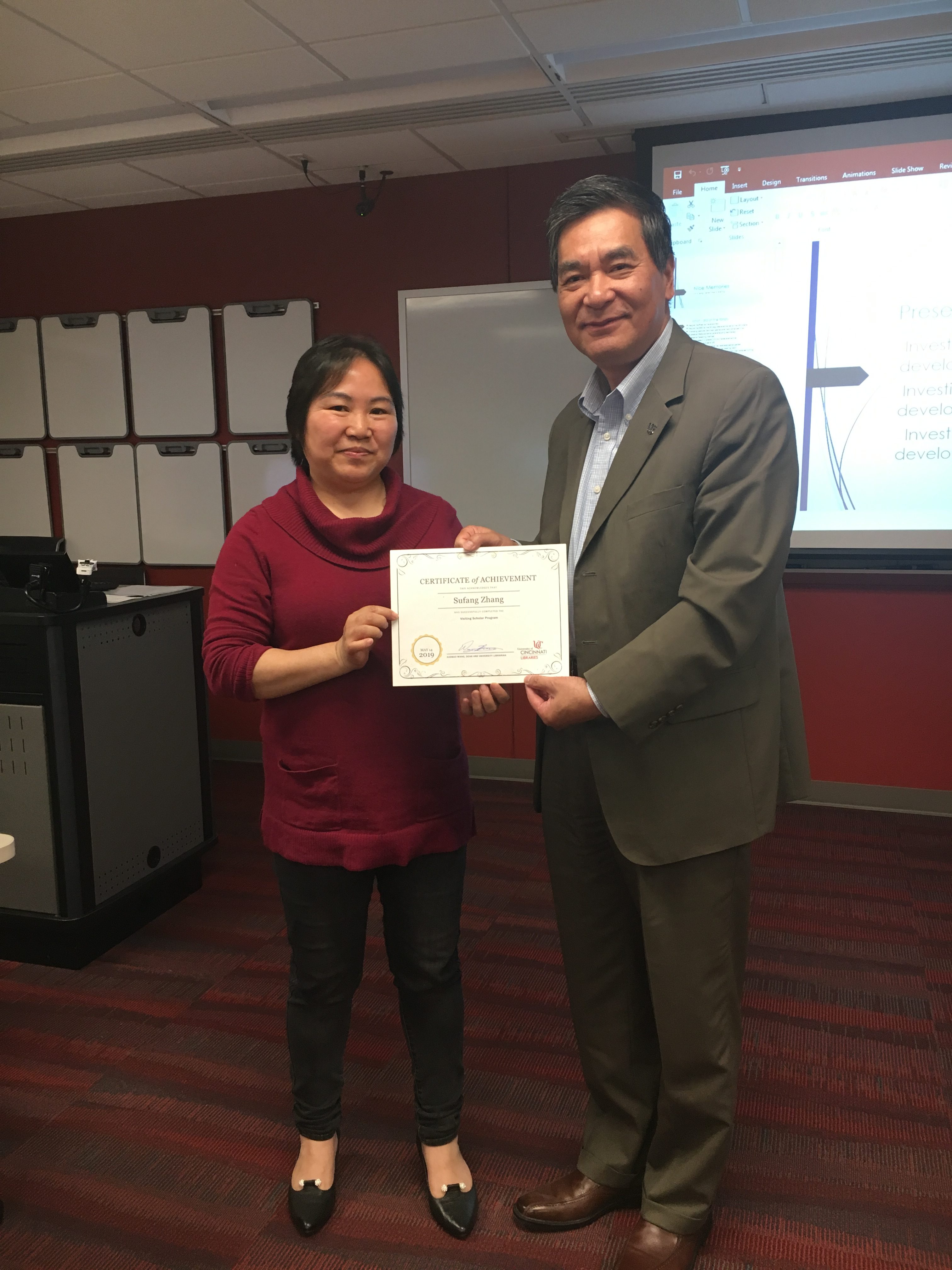
Sophie Zhang and Dean Xuemao Wang at Sophie’s Final Presentation
Sufang (Sophie) Zhang, the visiting librarian from South China Normal University (Guangzhou, China) completed her eighteen-month working and research period at the University of Cincinnati. For the first six months, Sophie spent her work time at the UC Press and the Digital Scholarship Center. As the faculty member at the Department of Information Management and Information Systems within the School of Economics and Management, she came with a goal of researching the current landscape of digital humanities centers and services in the United States. During the spring semester, she was able to visit two faculty members in information science at Kent State University and Syracuse University. She gave a final presentation on May 14th, 2019 about her whole experience. We wish Sophie a safe trip home and continuous successful collaboration with her peers in the United States.
Sophie Zhang’s final presentation

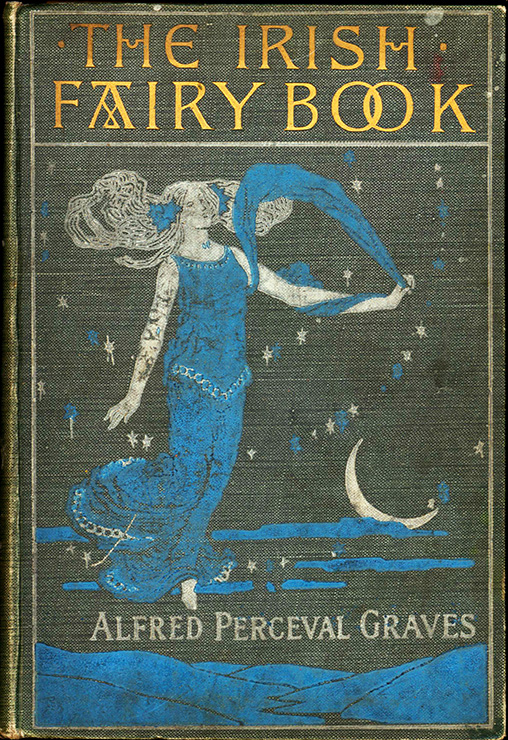
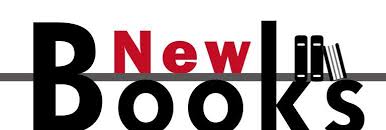
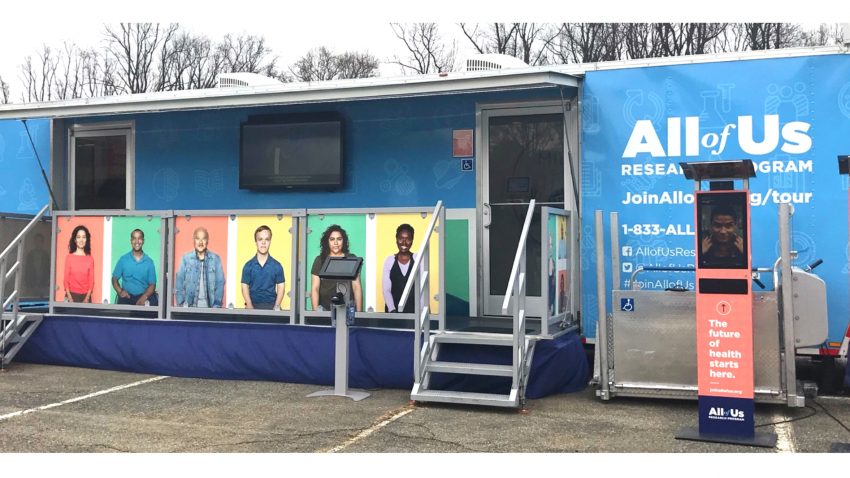 The Donald C. Harrison Health Sciences Library will host the All of Us awareness and education mobile unit on Friday, June 21 from 10:00 a.m. – 4:30 p.m., 231 Albert Sabin Way, Kresge Circle.
The Donald C. Harrison Health Sciences Library will host the All of Us awareness and education mobile unit on Friday, June 21 from 10:00 a.m. – 4:30 p.m., 231 Albert Sabin Way, Kresge Circle.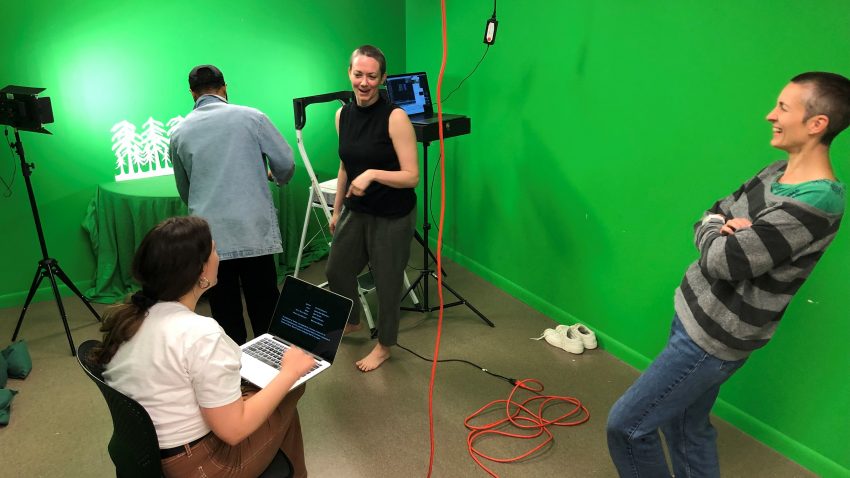
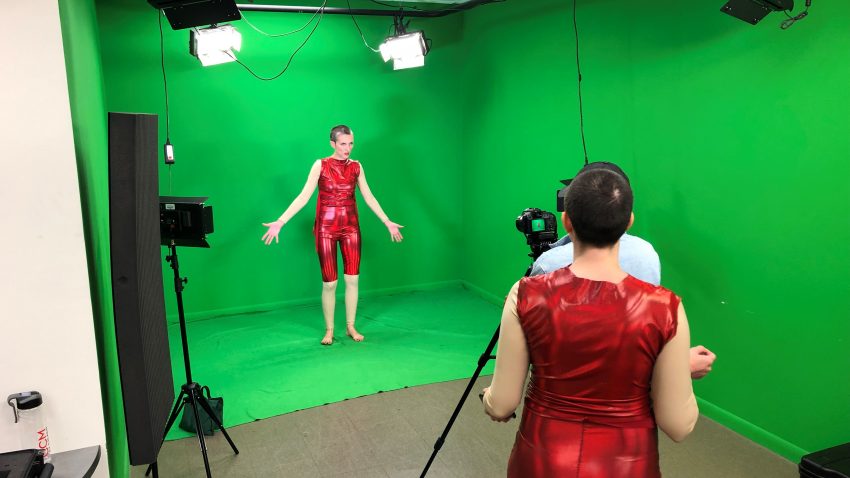


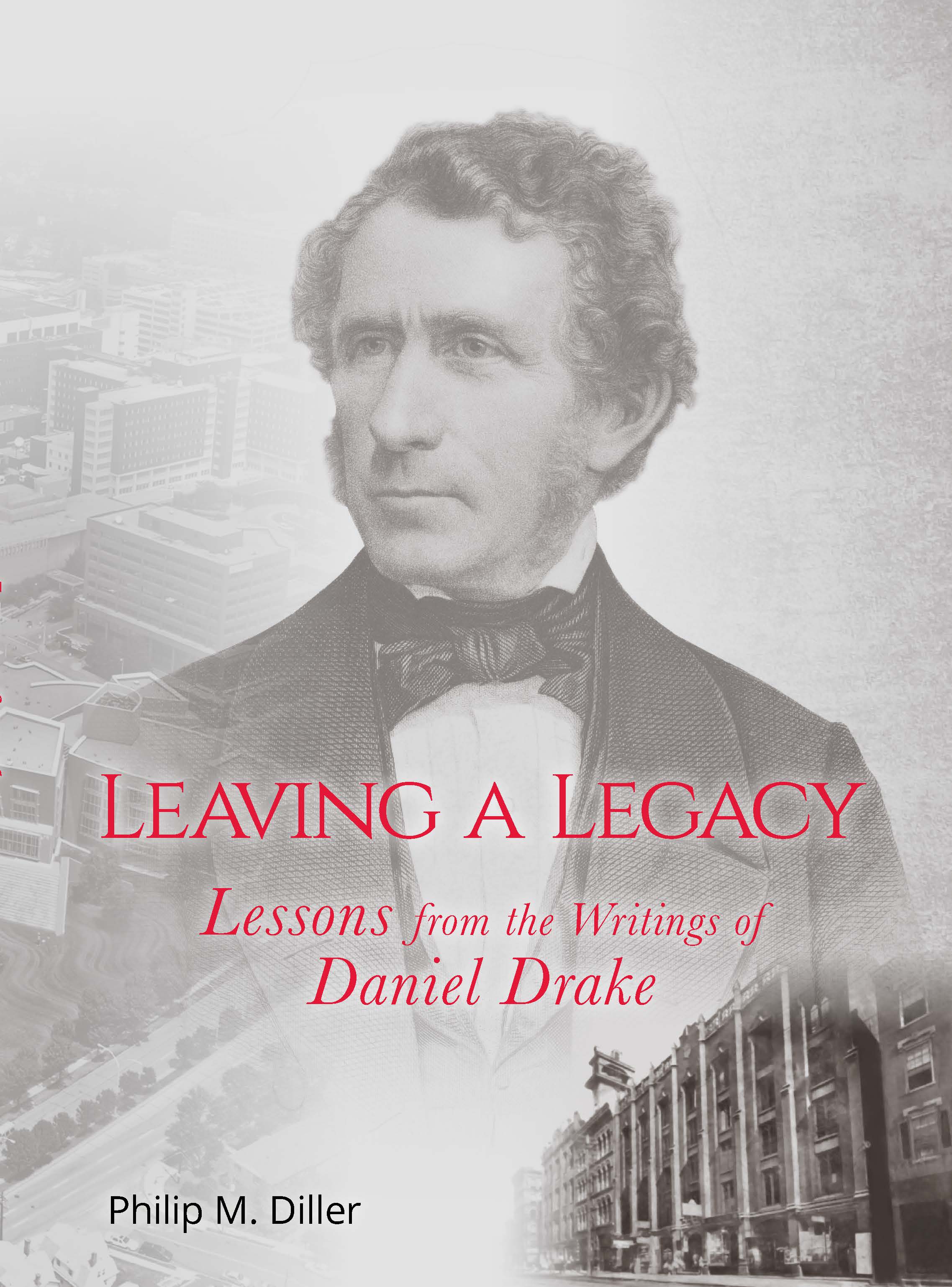 The Henry R. Winkler Center for the History of the Health Professions and the Cecil Striker Society for the History of Medicine will host the
The Henry R. Winkler Center for the History of the Health Professions and the Cecil Striker Society for the History of Medicine will host the 